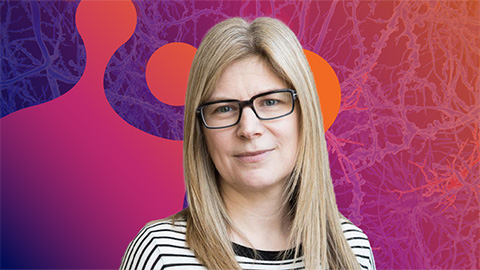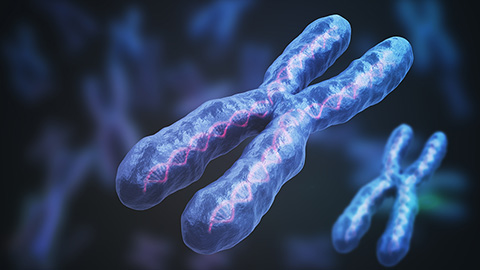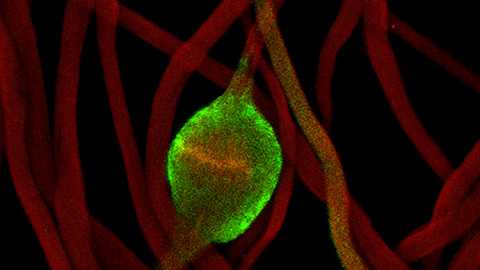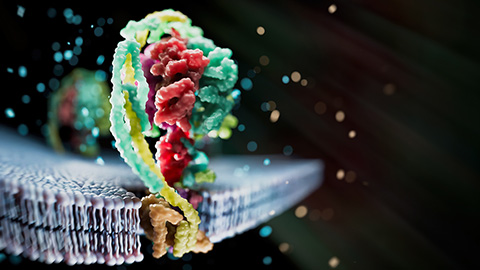Stabilizing the enzyme in fish odor syndrome
Fish odor syndrome, or trimethylaminuria, is a disease in which the liver cannot break down the smelly chemical trimethylamine, or TMA, that is produced by enzymes from bacteria residing in the gut. There is no cure for fish odor syndrome, which gives people an unpleasant fishy smell that can affect breath, sweat, urine and vaginal fluids.

Our research team at the University of Warwick is working to prevent the syndrome through studying the enzyme in the gut that produces trimethylamine.
Fish odor syndrome starts when an enzyme pathway in the gut called CntA/B produces TMA. The enzyme breaks down a TMA precursor called L-carnitine, which is found in dairy, fish and meat. If an individual lacks a functional liver enzyme called FMO3, they cannot degrade TMA into a non-smelly chemical form, trimethylamine oxide, or TMAO. The TMA then builds up in the body and ends up in bodily fluids.
In a recent paper, published in the Journal of Biological Chemistry, our team in Yin Chen's lab at Warwick's School of Life Sciences focused on the CntA protein of the CntA/B enzyme, to stabilize and study it.
CntA/B is a notoriously hard enzyme to study, but once it was stabilized, we were able to gain insight into how CntA perceives its L-carnitine substrate with a 3D crystal structure model, and by studying the complete electron transfer pathway, we could see how the protein is able to turn over TMA.
Now that we understand how exactly TMA is produced in the gut and that the enzyme can be inhibited, there are grounds for further research into future discovery of drugs targeting the TMA-producing enzyme in the human gut.
We have identified novel, drug-like inhibitors that can inhibit CntA function and thus TMA formation with the potential to attenuate TMA formation in the gut microbiome. This is vital not only for people who have fish odor syndrome, but also because TMA can accelerate atherosclerosis and heart disease.
This article was adapted from a University of Warwick press release. Read the original here.
Enjoy reading ASBMB Today?
Become a member to receive the print edition four times a year and the digital edition monthly.
Learn moreGet the latest from ASBMB Today
Enter your email address, and we’ll send you a weekly email with recent articles, interviews and more.
Latest in Science
Science highlights or most popular articles

Mapping fentanyl’s cellular footprint
Using a new imaging method, researchers at State University of New York at Buffalo traced fentanyl’s effects inside brain immune cells, revealing how the drug alters lipid droplets, pointing to new paths for addiction diagnostics.

Designing life’s building blocks with AI
Tanja Kortemme, a professor at the University of California, San Francisco, will discuss her research using computational biology to engineer proteins at the 2026 ASBMB Annual Meeting.

Cholesterol as a novel biomarker for Fragile X syndrome
Researchers in Quebec identified lower levels of a brain cholesterol metabolite, 24-hydroxycholesterol, in patients with fragile X syndrome, a finding that could provide a simple blood-based biomarker for understanding and managing the condition.

How lipid metabolism shapes sperm development
Researchers at Hokkaido University identify the enzyme behind a key lipid in sperm development. The findings reveal how seminolipids shape sperm formation and may inform future diagnostics and treatments for male infertility.

Mass spec method captures proteins in native membranes
Yale scientists developed a mass spec protocol that keeps proteins in their native environment, detects intact protein complexes and tracks drug binding, offering a clearer view of membrane biology.

Laser-assisted cryoEM method preserves protein structure
University of Wisconsin–Madison researchers devised a method that prevents protein compaction during cryoEM prep, restoring natural structure for mass spec studies. The approach could expand high-resolution imaging to more complex protein systems.

